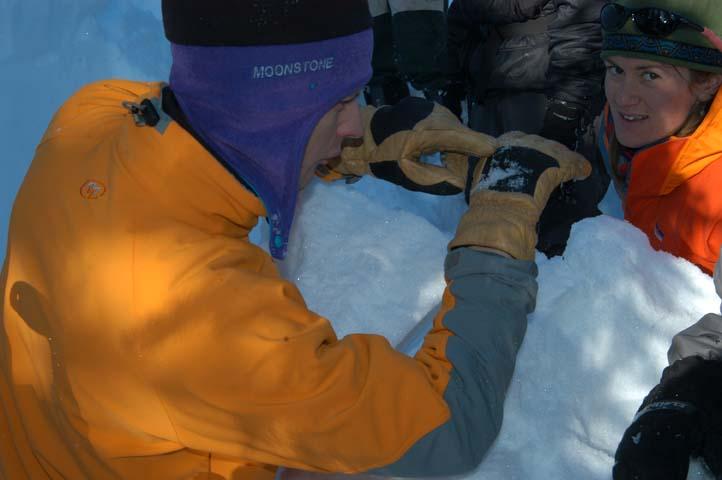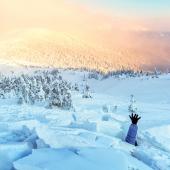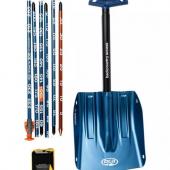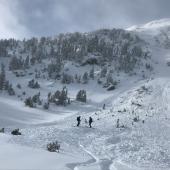Avalanche Center
All about the GNFAC.
Chances are you're someone who enjoys winter – as a snowmobiler, backcountry skier, or snowboarder, you probably dream of steep slopes and deep, untracked powder. Or perhaps you snowshoe or cross-country ski, and you cherish the winter woods and the solitude that a blanket of snow provides. Either way, winter recreation in southwest Montana can be risky business because of the terrain we often choose to play in or travel through: avalanche terrain.
An avalanche can occur given a few simple ingredients: a steep slope (30-45 degrees), a slab of snow, and a buried weak layer. Detecting unstable snow and trying to answer the question, "Will the snow slide?" is difficult. Because backcountry travel demands complex decision making, the Gallatin National Forest Avalanche Center (GNFAC), based in Bozeman, gives informative snow stability information and daily updates.
The GNFAC has three full-time employees. Their mission is to educate the public about avalanche hazards through avalanche advisories and educational seminars. They also provide detailed information about snowpack and weather conditions, with a forecast area covering most of the terrain within an easy drive from Bozeman: the Bridger Mountains, Gallatin Range, Madison Range, and the mountains around Cooke City.
Forecasters are in the field most days, digging snowpits, performing stability tests, and gathering information about specific mountain ranges. This, coupled with observations from volunteers and data from remote weather stations, provides a relevant picture of snow stability. The daily avalanche advisories include this information but also recap previous storm events and give detailed 24-hour mountain weather forecasts. Armed with this knowledge you can make educated decisions about the snow and choose your routes wisely.
Besides offering daily advisories, the GNFAC is committed to avalanche education among the general public. The Gallatin National Forest's backcountry winter use is growing and thus it is unfortunate, but inevitable, that we'll continue to see avalanche incidents and deaths in this area.
You can find out more about the GNFAC through its website, mtavalanche.com. Daily advisories are posted there and you can also sign up for a free email subscription, which you'll receive first thing in the morning. Just imagine: you wake up, rub the sleepers out of your eyes, grab a strong cup of coffee, and read about the snow conditions before you've even slipped the long underwear on. Perusing the site you'll find a copy of the latest annual report, information about the non-profit group Friends of the Avalanche Center, scientific articles, and useful links. A new addition to the site is a page dedicated to real-time weather data downloaded from Bridger Bowl and Big Sky ski areas.
GNFAC advisories begin once the snow starts to accumulate, usually in November, and they continue until mid-April. The advisory hotline is 587-6981 and 838-2341 in Cooke City. Daily recordings are completed by 7:30 a.m.











